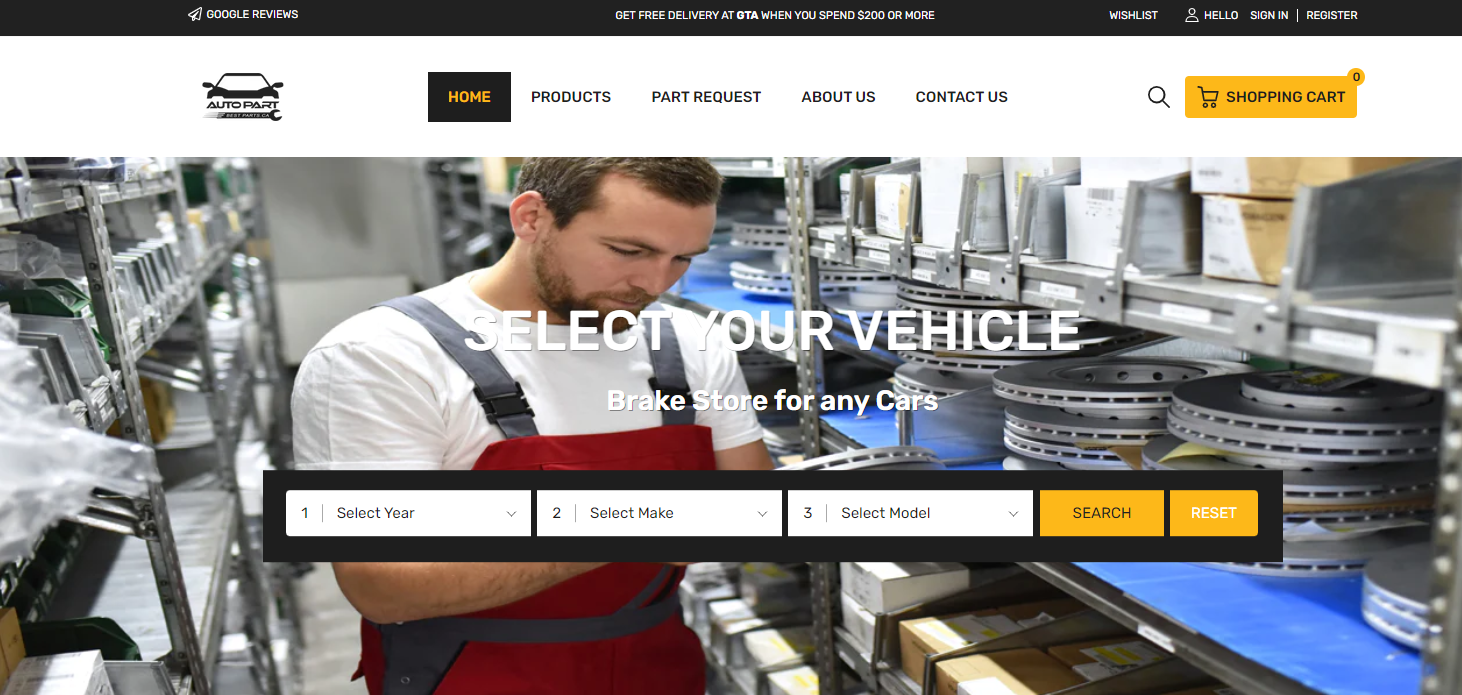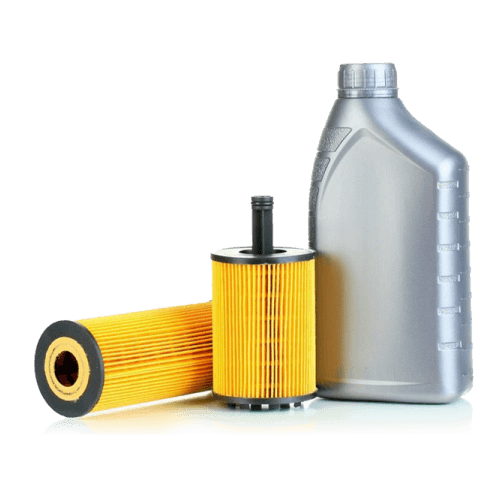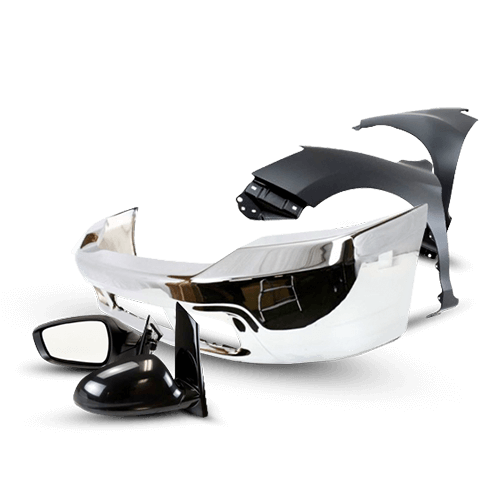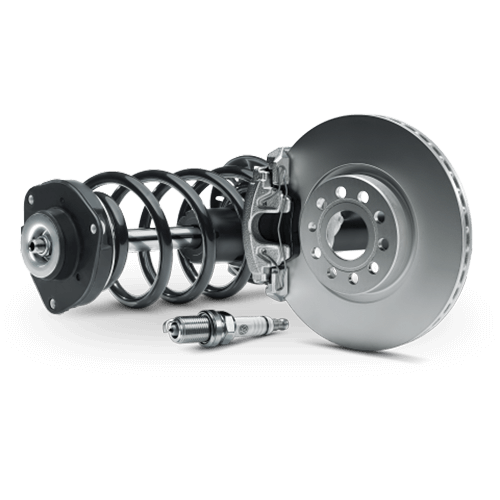
Bad Brake Rotors Symptoms: 7 Brake Disc Failure Signs
Brake rotors are the steel discs that provide the friction surface for your brake pads to slow or stop the vehicle. They are the central safety component of the braking system. If rotors are worn, warped, or damaged, braking distance increases and the risk of collision rises.
What Are the Signs of Bad Brake Rotors?
Bad brake rotors show measurable physical and performance changes that reduce braking efficiency. These warning signs can be detected through both driving feel and visual inspection.
There are 7 main signs of brake rotor failure you should look for:
-
Vibration or Pulsation: A shaking brake pedal or steering wheel during braking signals rotor thickness variation. Even a 0.001-inch difference can cause noticeable vibration.
-
Deep Grooves or Scoring: Visible cuts or rough surfaces reduce pad contact, lowering stopping power.
-
Excessive Rust: Light surface rust clears after braking, but deep corrosion compromises structure. Zinc-coated rotors, like PowerStop Drilled & Slotted Rotors, resist this damage.
-
Blue Discoloration: Overheated rotors (exceeding 500°F) turn blue, a sign of warping and reduced hardness.
-
Uneven Brake Pad Wear: If pads wear faster on one side, the rotor surface is uneven or warped.
-
Reduced Stopping Performance: Longer stopping distances or uneven response confirm rotor deterioration.
-
Below-Minimum Thickness: Rotors must meet the manufacturer’s stamped minimum thickness. Use a micrometer to check.
What Do Brake Rotors Do?
Brake rotors convert kinetic energy into heat through friction with the pads, allowing the vehicle to slow down or stop. They also dissipate the heat to prevent brake fade.

To understand their role fully, here is how brake rotors function within the braking system:
-
Hydraulic fluid activates calipers.
-
Calipers squeeze pads against rotors.
-
Friction slows wheel rotation and stops the car.
-
Rotors absorb and dissipate heat to prevent brake fade.
Rotors must remain flat, strong, and thick enough to handle repeated high-heat cycles without cracking or warping.
What Causes Brake Rotors to Go Bad?
Brake rotors wear down or deform because of repeated stress, heat cycles, and environmental exposure. Every mile adds to this degradation.
There are 5 main causes of rotor failure:
-
Normal Wear – Each stop removes a fraction of rotor surface. After 50,000–70,000 miles, many rotors reach replacement.
-
Excessive Heat – Heavy braking, towing, or mountain driving overheats rotors, leading to warping or glazing.
-
Rust and Corrosion – Salt, humidity, and road chemicals accelerate rotor decay.
-
Impact Damage – Potholes or debris can crack or chip rotors.
-
Low-Quality Pads – Abrasive pads wear rotors faster and create uneven surfaces.
Can You Drive with Bad Rotors?
Driving with bad brake rotors is unsafe because stopping distance increases and brake response becomes unpredictable. Even if the car moves, braking stability is compromised.
Here are the main risks of continuing to drive with bad rotors:
-
Stopping distance increases by up to 50%.
-
Brake pedal vibration reduces vehicle control.
-
Rotor damage accelerates pad and caliper wear, raising repair costs.
-
In emergencies, brakes may fail completely.
How Often Should Brake Rotors Be Replaced?
Most brake rotors last between 50,000–70,000 miles, but lifespan varies with driving conditions and rotor quality. Regular inspections determine the correct interval.

These factors guide when rotors should be replaced:
-
Standard vehicles: 50,000–70,000 miles.
-
Aggressive driving or towing: 25,000–40,000 miles.
-
Always replace if rotors are below the minimum stamped thickness or show cracks, warping, or severe rust.
After each brake pad change, rotors should be resurfaced if within spec or replaced if too thin.
How to Extend Brake Rotor Lifespan
Brake rotor life can be extended through proper driving habits, quality parts, and consistent maintenance. Preventing excess heat and wear keeps them reliable longer.
Use the following 7 proven strategies to extend rotor lifespan:
-
Brake smoothly: Avoid sudden hard stops.
-
Inspect regularly: Check rotors at every pad change or 10,000 miles.
-
Use quality pads: Carbon-fiber ceramic pads (like PowerStop Z36) reduce rotor wear.
-
Avoid overloads: Stay within vehicle towing and weight limits.
-
Protect against rust: Choose plated rotors for better corrosion resistance.
-
Rotate tires: Balanced tire wear reduces uneven braking stress.
- Use engine braking: Downshift on hills instead of riding brakes.
Brake rotors are the backbone of your vehicle’s braking safety. Ignoring early signs of rotor wear - such as vibration, grooves, or excessive rust - risks longer stopping distances and costly repairs. By inspecting regularly, replacing at the correct intervals, and using OEM-grade components, you protect both your safety and your vehicle’s performance.
Well-maintained rotors don’t just stop your car; they stop accidents.
At BestParts.ca, we supply OEM-grade brake rotors and pads for European, domestic, and Asian vehicles, backed by fitment assurance and free Canada-wide shipping. Explore our all brake rotor catalog today and restore confidence in every stop.






















































